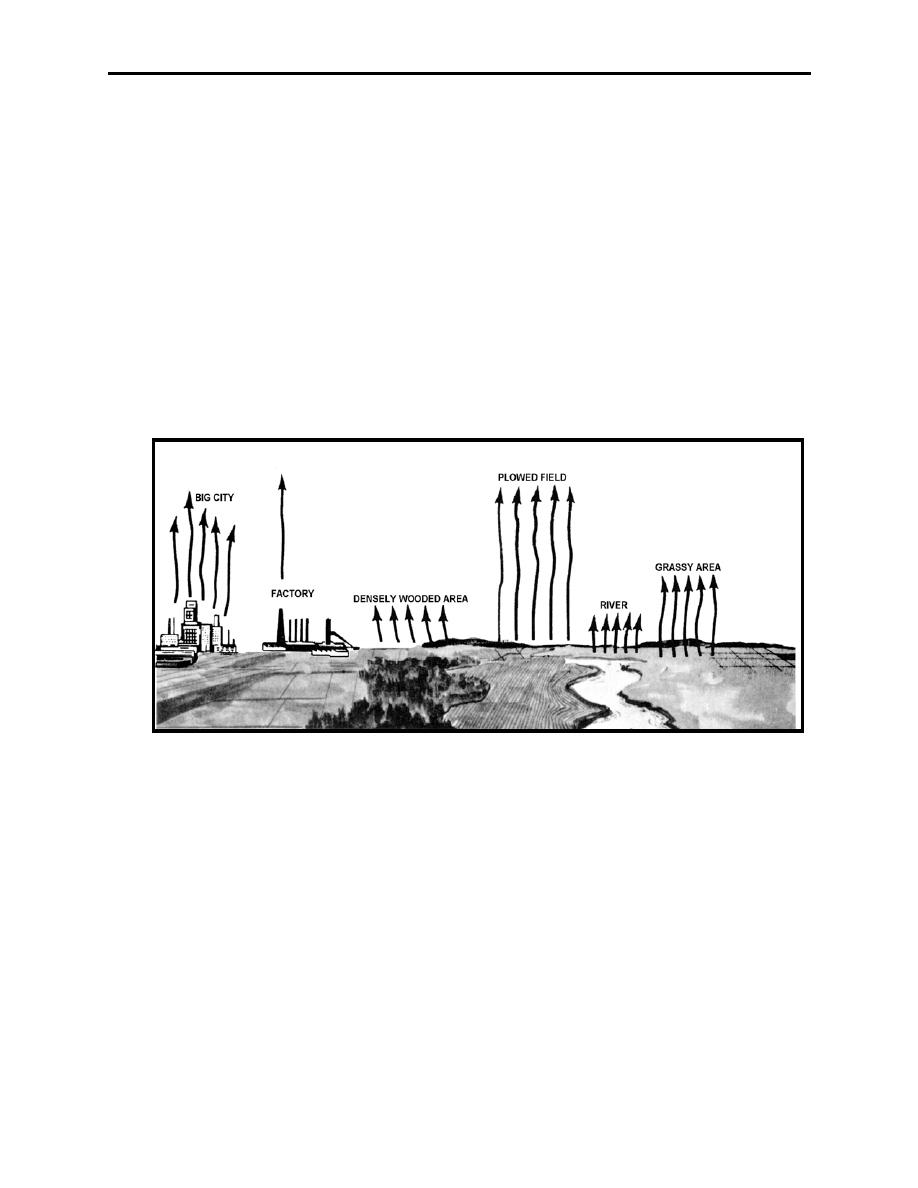 |
|||
|
|
|||
|
Page Title:
Figure 5-2. Strength of Thermal Currents Vary with Composition of Surface |
|
||
| ||||||||||
|
|  AVIATION WEATHER
CHAPTER FIVE
Clear Air Turbulence
CAT normally occurs outside of clouds and usually occurs at altitudes above 15,000 feet MSL,
due to strong wind shears in the jet stream. CAT is not limited to jet streams, in fact CAT can be
found in each of the four categories of turbulence, but the most severe CAT is associated with jet
streams. You may also notice the Wind Shear category of turbulence is only CAT.
Thermal Turbulence
The thermal or convective turbulence forms as a result of heating from below. Localized vertical
thermal turbulence. Strong solar heating of the Earth's surface can result in localized vertical air
movements, both ascending and descending. For every rising current, there is a compensating
downward current usually slower in speed since it covers a broader area. Such vertical air
movements can also result from cooler air being heated through contact with a warm surface.
Figure 5-2 Strength of Thermal Currents Vary with Composition of Surface
The strength of thermal currents depends in part on the extent to which the Earth's surface has
been heated, which in turn, depends upon the nature of the surface (Figure 5-2). Notice in the
illustration, dry- barren surfaces such as sandy or rocky wasteland and plowed fields absorb heat
more readily than surfaces covered with grass or other vegetation, which tend to contain more
moisture. Thus, barren surfaces generally cause stronger convective currents. In comparison,
water surfaces are heated more slowly. The difference in surface heating between land and water
masses is responsible for the turbulence experienced by aircrews when crossing shorelines on hot
summer days.
Weather Hazards of Turbulence, Icing, Ceilings, Visibility, and Ash Clouds
5-5
|
|
Privacy Statement - Press Release - Copyright Information. - Contact Us |